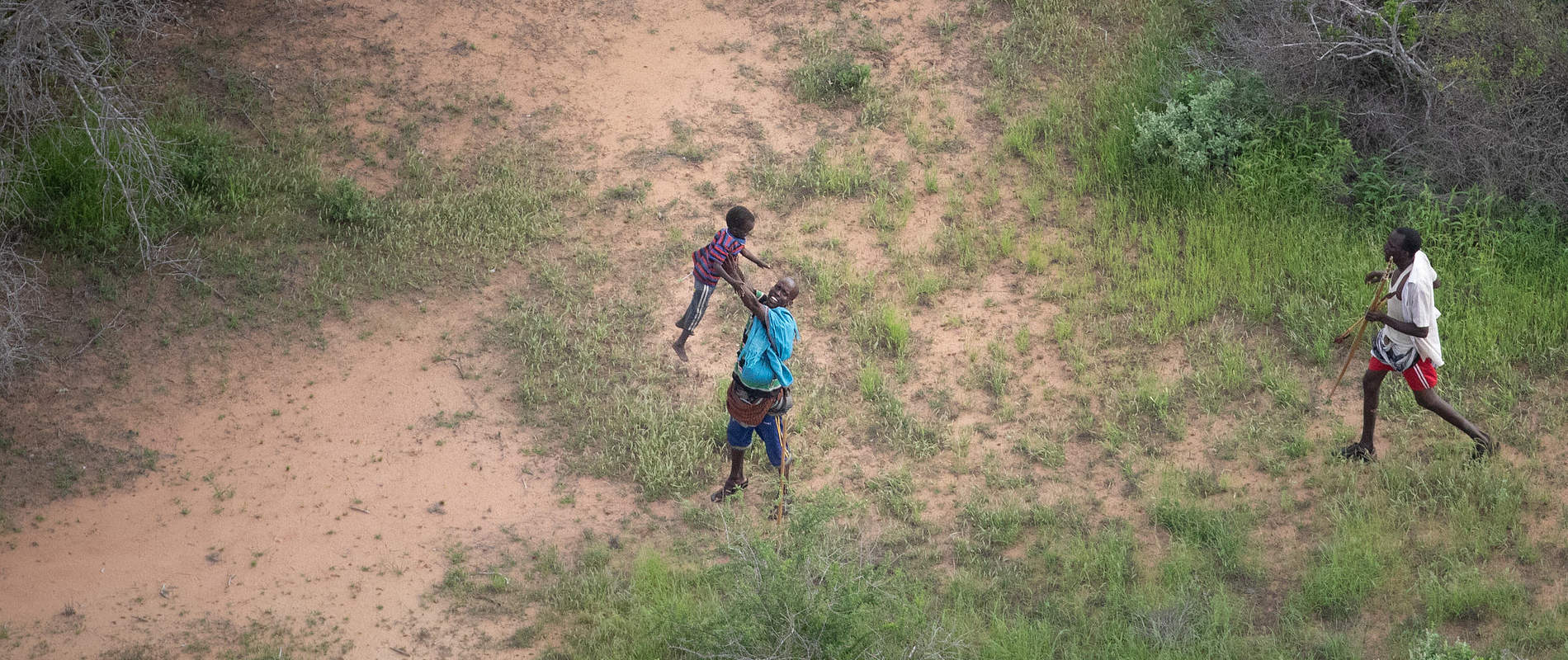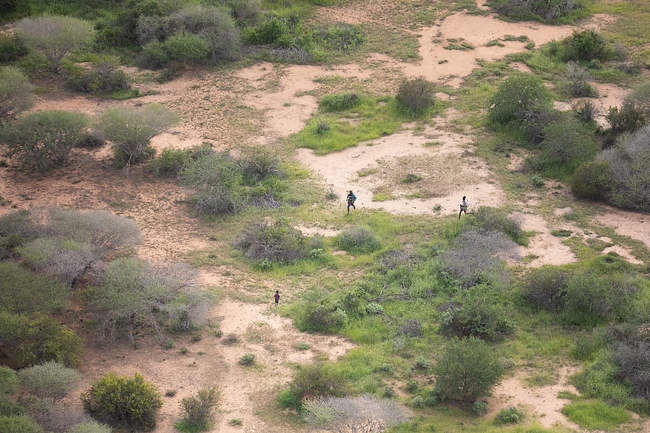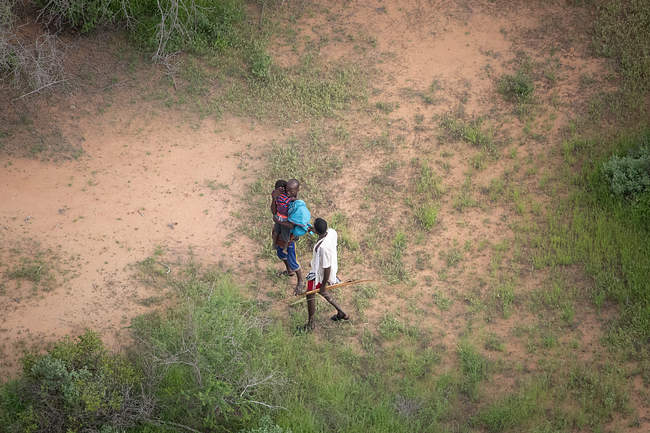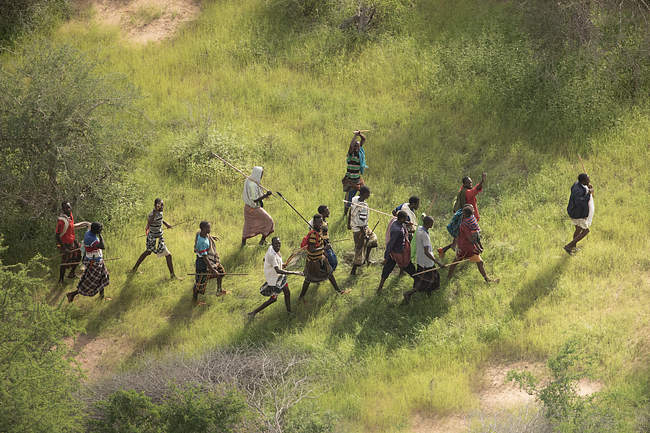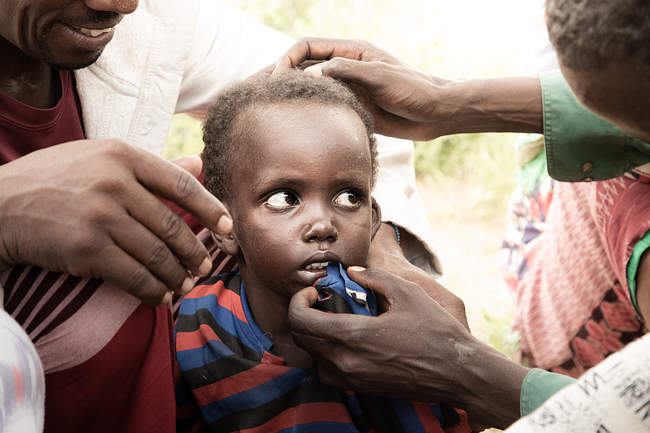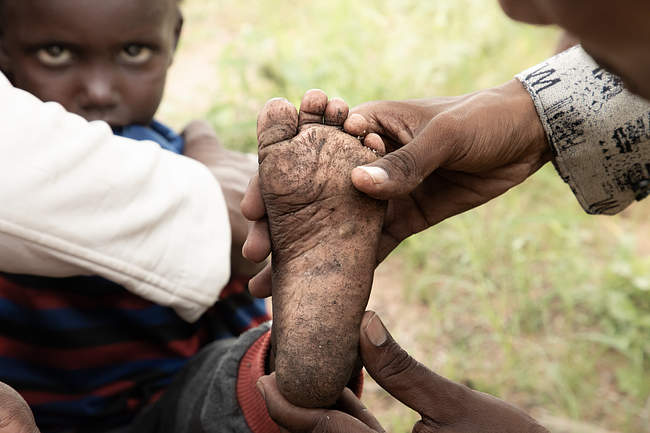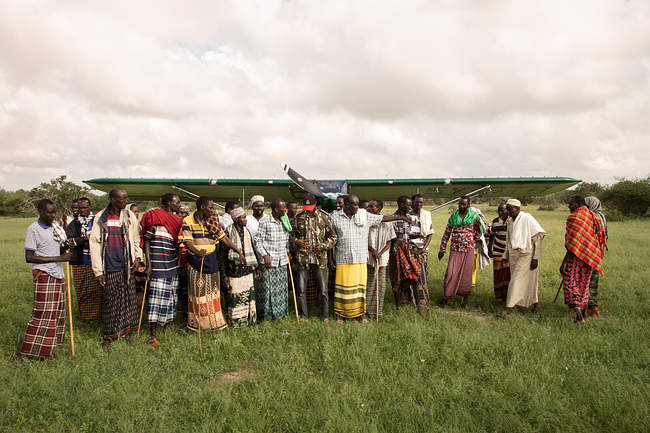As storms raged, a four-year-old boy from Asa went missing in the surrounding wilderness. While ground teams tried to track his tiny footprints, our fixed-wing pilot supported the search party from the air. One lost night stretched into several, and it seemed increasingly impossible that the child would be found alive in such a vast, unforgiving landscape. But then, on the sixth day, a miracle happened. This account is told by the SWT pilot who joined the search party, Roan Carr-Hartley.
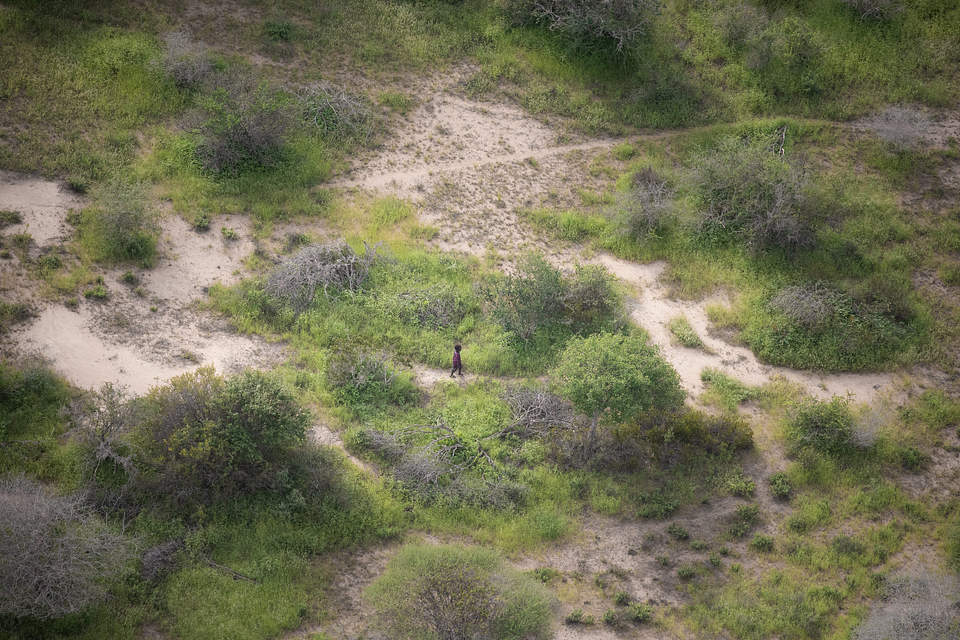
On the evening of 29th November, we received a call from the chief of Asa, a community 52 kilometres east of the northern Tsavo East park boundary. He reported that a four-year-old boy had gone missing during a storm the day prior, while out herding livestock with his brothers. The chief had heard people from the neighbouring town speaking about a pilot who helped find a missing child just a few days prior. After hearing these stories, he too asked for aerial assistance.
It was too late to initiate a search that night, but the following morning, I left Kaluku HQ at around 6:15am and flew 70 minutes to reach the boy’s village. By the time I was overhead, a search party of 70 men were fanning through the wild scrubland in search of the little boy. I had a rough direction of the search party’s location given to me by the Chief. The party had tracked the boy to an area 7 kilometres from his village, but then the tracks started to become unreadable.
With no way of communicating with them while I was in the air, I had organised for the search party to walk with a white cloth tied to a long stick, which would make it easier to find them in the dense bush. After locating the group in this area I began my search. Four hours of scanning the sea of vegetation revealed nothing but an empty fuel tank and various animals, including hyenas and jackals. It was an unforgiving environment for any person to be alone, let alone a child so young. However, because of heavy rains, there was no shortage of surface water. This at least gave me some peace of mind that the boy would be able to find water.
After refuelling, I flew back later in the day to resume the search. I flew for another 3.5 hours before we ran out of daylight and I had to return to base. It seemed hopeless searching for a tiny boy in such a huge expanse of wilderness. There have been times where I haven’t been able to locate a particular elephant for up to a week, let alone a four-year-old child.
It rained heavily that night, and the following morning, the boy’s tracks were nowhere to be seen. The chief and the boy’s family determined that in the absence of fresh tracks and a general area to narrow down the search, nothing more could be done from the air. It would be a case of looking for a needle in a haystack. Instead, the search party would continue on foot.
On the evening of 3rd December — five nights after the boy went missing — I received another call from the chief. He told me that the ground team had re-discovered the boy's tracks, a staggering 15 kilometres from his village. I was in shock that the boy was still alive, let alone walking. After nearly a week of heavy rainfall, with no food and predators roaming the area, one can be forgiven for losing hope.

However, hope had been reignited, and I was incredibly eager to keep searching. I kept thinking of the poor little guy alone out there and wanted to do everything possible to find him — even if it seemed like an impossible mission.
The next morning, I was wheels up at 6:15am and headed to Asa. 70 minutes later, I arrived and began to look for the search party. Once again, I couldn’t speak with the ground teams while in the air, but I had been given the general direction to fly north of the village for 15 kilometres. This time, however, the search party was completely out of communication, so there was no way to ask them to signal the aircraft. They themselves had been out for three days looking for the boy, surviving off milk mixed with water.
I spent the next hour and a half flying transects in an attempt to find the search party, so I could narrow down the general area and begin my search, but they were nowhere to be seen. But then, when I turned back to begin my westward transect, a miracle happened:
Off my left wing, I saw a tiny figure below me, surrounded by a mass of shrubs and trees. I could not believe my eyes, but there he was: a tiny boy surrounded by endless wilderness. I was in shock that he was still alive and walking. I had not even begun to look for the boy; at that point, I was still searching for the group, which made it 10 times harder to believe what had just happened.
The boy initially cowered away from the plane, then began darting under bushes and trees. He was obviously hypoglycaemic and stumbling as he walked. I immediately gained altitude and began to circle tightly, keeping my eyes fixed on him. In a land where everything looks the same, once you lose sight of something it can be very difficult to find it again. With no way of communicating with the search party, I was trying to figure out how to get a team to him, when the nearest village was 18 kilometres away.
After circling for a half hour, three men suddenly appeared off my right wing. They were part of the search party and had come from kilometres away after seeing me circling for a while. I opened the door of the aircraft and began pointing at the boy. They realised I had found something and began running. They eventually got to the boy, who was frozen still in disbelief that his ordeal was over. Upon reaching him, they lifted him above their shoulders and began cheering and chanting. It was a sight that made me well up as I watched from above. Finding him was a near-impossible objective, but somehow the stars aligned and he happened to be standing in a small, open area at the very moment I decided to turn.

In his people’s custom, it is imperative that the search party walk back to the village with the boy, all the way chanting a song of blessing and thanks. It is also necessary that the boy’s mother and father provide food and water for the search party upon their arrival.
I left the boy with the party and found a road close to the village where I could land. I was met by the elders of the village and the area chief, who told me the boy's name, which was Ayub, before taking me to see his mother and father. When I showed his mother the photos of her boy, she broke down into tears. She couldn’t believe he was still alive and was flooded with emotion, as one can imagine. The rest of the village — brothers, sisters, cousins, grandparents — all crowded around the camera, in disbelief that he had finally been found. We waited two hours, drinking tea and telling stories, until we heard the distant chanting of the search party, who had carried him for 18 kilometres. The women of the village began to chant and dance to welcome the boy home.
After an emotionally charged welcome, we gave the boy some rehydration and put him on a slow drip. He was covered in mosquito bites and scratches from the bristling thorn bushes. His feet were blistered and riddled with thorns and cuts, which is little surprise given the huge distances he walked. He was extremely weak, as one can imagine. Two roaming doctors arrived to tend to the boy and ensure that he was okay.

Before leaving the boy in good hands, the village elders came together and gifted me a young billy goat. This was a very generous, meaningful gift, as billy goats from this area are highly sought after. The goat and I flew home, feeling extremely content and grateful. For the boy, his six-day ordeal had finally come to an end.
I received a message from Ayub's parent’s today, with the update that their son has fully recovered and is out playing with his friends. They also shared that they have added Roan to his name, which left me very touched. His friends have nicknamed him ‘Pilot’ — a wonderful way to commemorate his six-day saga!
– As told by Roan Carr-Hartley, SWT Pilot
